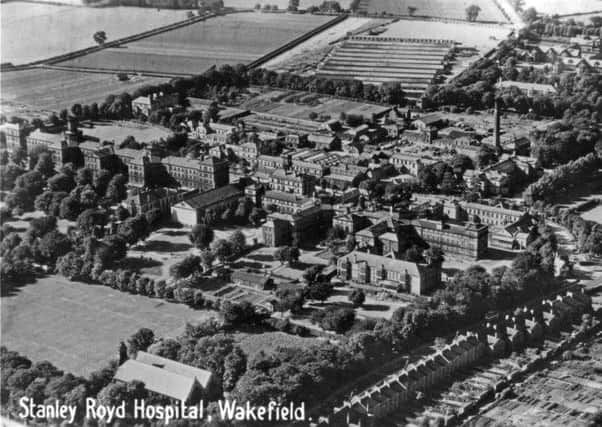Asylum transformed care of mentally ill


Before the 1800s family members had been expected to take care of loved ones who were experiencing psychological difficulties.
A number of private hospitals opened in the 18th century, but conditions in such places were poor. The family of the ‘inmate’, as residents were often called, would perhaps have been shocked to learn that restraints, also used on convicted criminals, often confined their relatives to dark, cold rooms for extremely long periods. In addition, their treatments for mental illness consisted of techniques developed from those used to control wild animals.
Advertisement
Hide AdAdvertisement
Hide AdThe restraint of James Norris, a patient at Bethlem Royal Hospital in London, was particularly typical of the time; he was chained to an iron bar for several years and could only stand up or sit down in the same position.
In the late 1700s this attitude towards the mentally ill was increasingly seen as barbaric and there was a clamour for reform. One such person to speak out was William Tuke, a prominent Quaker and tea merchant from York, who founded the York Retreat in 1796. There, patients were allowed to remain free, but had to engage in leisure activity and work, which contributed to the upkeep of the retreat. The doctor acted as an authority, or father figure, who reinforced good behaviour and disciplined negative actions. This method became known as moral treatment.
In 1808 the County Asylums Act was passed allowing areas of the country to collect money to establish an asylum for paupers that were deemed “mentally unfit”. However, the legislation was not mandatory and many areas did not implement the powers.
The magistrates of Wakefield were swift to act and the West Riding Pauper Lunatic Asylum at Wakefield was first occupied on November 23, 1818, being the first example in Yorkshire.
Advertisement
Hide AdAdvertisement
Hide AdThe grandson of William Tuke, Samuel, had been consulted on methods for running the asylum. He was also full of praise for the finished building, designed by Watson and Pritchett, of York, noting that it omitted any exterior extravagances and paid attention instead to interior facilities for the patients.
However, the construction process took some 18 months longer than scheduled and the expenditure was £7,000 over budget, in total amounting to £36,448 4s 9¼d. Walling Fen brick was used, along with Elland stone. The building was ‘H’ shaped and had three floors. ‘crow’s nests’ were placed in towers so that the whole of the building, patients and staff could be watched by observers who made sure everyone remained safe and that no abuses of power occurred.
Patients were provided, in nearly all instances, with private accommodation and communal wards were only employed as the conditions of the sick dictated. The windows were glazed and not barred. The perimeter wall was also partially sunken to afford patients a pleasant view out of their windows, but evidently this was too good and a number of patients escaped.
Some 150 patients could be accommodated in the hospital initially, but early in the institution’s history there was difficulty meeting this number. The Overseers of the Poor were reluctant to take paupers with mental health problems away from the workhouse as the cost to maintain them there was cheaper than that of residence in the asylum.
Advertisement
Hide AdAdvertisement
Hide AdEven though the asylum was founded on the principle of moral treatment, restraints were used, necessarily in most cases, while bloodletting and seclusion were also implemented. The asylum was not immune to the use of inhumane treatments such as the ‘revolving chair’, where patients were spun at 100 revolutions per minute. However, the application of this method seems to have been discontinued in the early 1820s.
The use of employment as a therapy led to the hospital being quite self-sufficient. Patients would cook meals, tend the gardens, raise livestock, do the laundry and make clothes.
Leisure activities in the summer months included visits to Walton Hall, home of renowned naturalist Charles Waterton, and other pleasant places around Wakefield. A choir, orchestra and brass band were also founded and often gave recitals to the public.
Segregation of the male and female patients was enforced for many years. However, once a week a dance was held for them and was quite popular, as was an annual fancy dress ball.
Advertisement
Hide AdAdvertisement
Hide AdAs time progressed, and advances in medicine improved understanding and treatment of mental illness, there became a reduced demand for full-time care of patients. The hospital closed in the mid-1990s and has subsequently been transformed into flats.